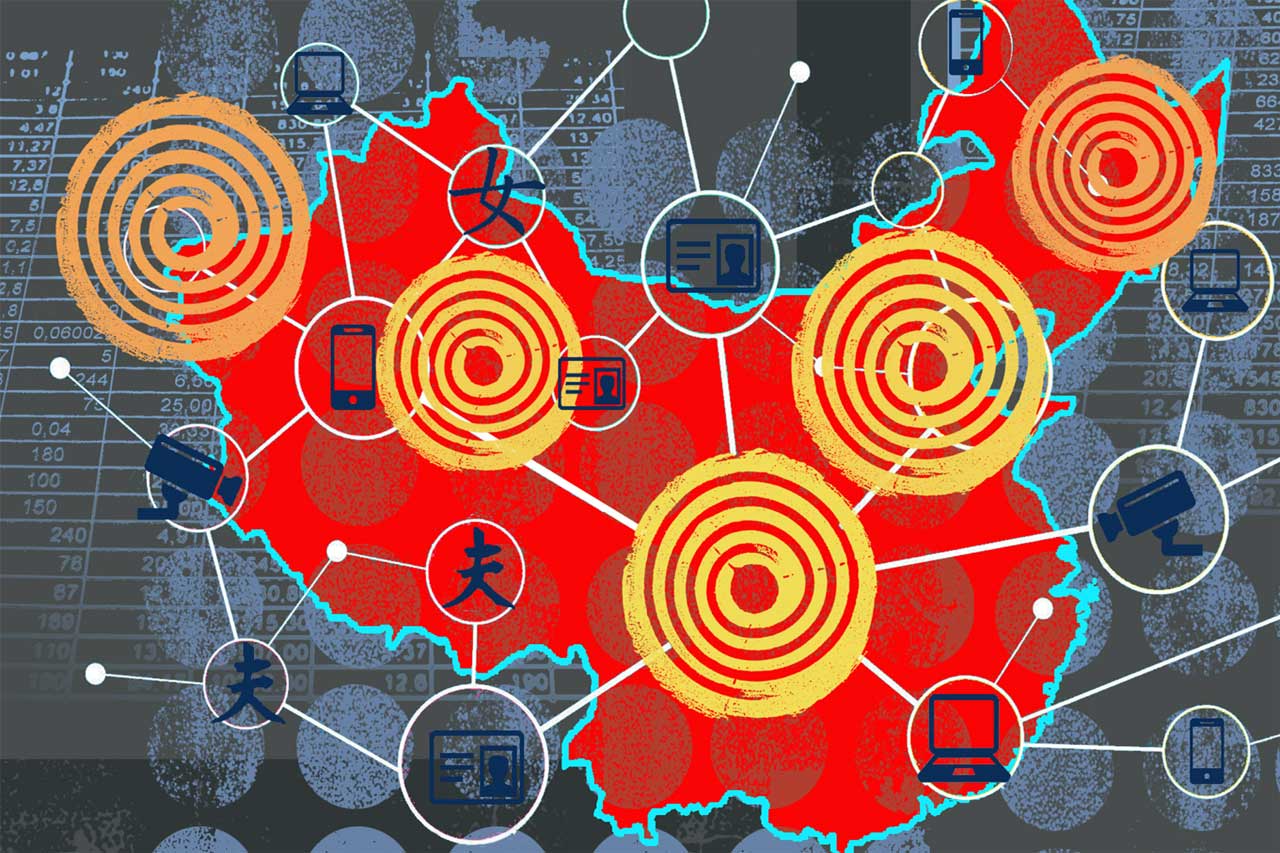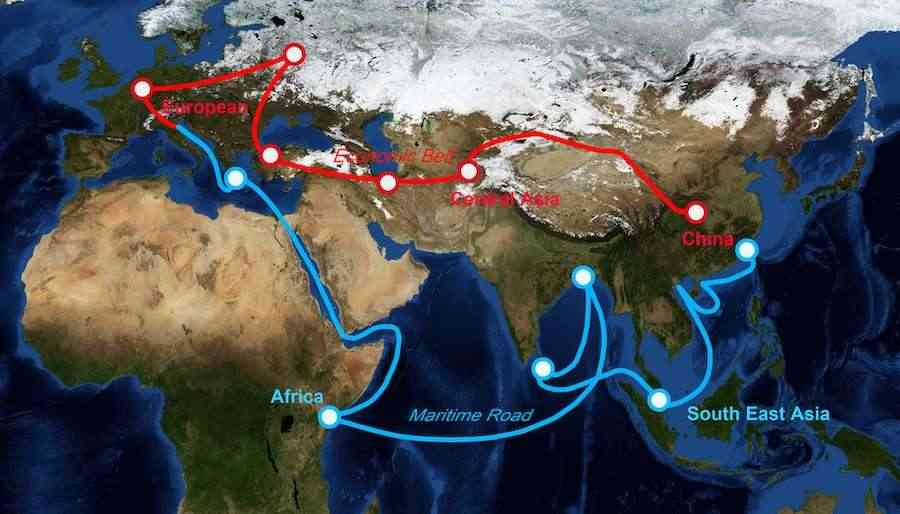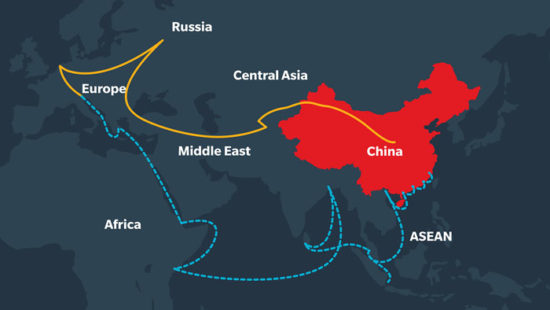In the 21st century, China’s Belt and Road Initiative (BRI) has evolved beyond physical infrastructure like railroads and ports to encompass a new frontier — digital technology. This evolution has birthed the Digital Silk Road (DSR), a strategic extension of the BRI aimed at advancing global digital connectivity. Explore China’s Digital Silk Road initiative, focusing on the global expansion of 5G and surveillance technologies, and the implications for digital sovereignty and privacy.
The DSR involves exporting cutting-edge technology to developing and emerging markets, including 5G networks, fiber-optic systems, cloud services, AI-powered surveillance tools, and satellite navigation systems. These advancements promise to unlock economic opportunity and modernize connectivity. But they also carry complex implications for digital sovereignty, data governance, and civil liberties.
As more countries adopt Chinese technology, a global debate has emerged: Does the Digital Silk Road represent the democratization of tech infrastructure, or is it a tool for strategic influence and digital authoritarianism? In this blog, we’ll unpack the global reach of China’s digital exports, explore the benefits and risks, and hear from strategic procurement expert Mattias Knutsson on how nations and businesses can respond.
The Digital Silk Road: Scope and Reach
Launched in 2015, the Digital Silk Road is intended to bolster digital infrastructure among BRI countries. According to the Center for Strategic and International Studies (CSIS), over 70 countries have signed digital cooperation agreements with China as part of this effort.
Key Sectors Include:
- 5G and Telecom Equipment: Huawei and ZTE lead in building mobile networks.
- Fiber-Optic Cables: Both terrestrial and undersea cables are deployed to expand bandwidth and connectivity.
- Cloud Computing and Big Data Centers: Chinese firms offer cloud hosting to governments and companies overseas.
- Satellite and Navigation Systems: China’s BeiDou system is an alternative to GPS and is now used in transportation, agriculture, and public safety.
- Smart Cities and Surveillance: City-wide camera networks, facial recognition, and AI analytics are deployed under smart governance models.
These technologies are often bundled with state-backed financing, training programs, and turnkey solutions, making them especially attractive to lower-income countries with limited tech infrastructure.
5G Expansion: Opportunities and Controversies
The rollout of 5G is a core component of the Digital Silk Road. With speeds up to 100 times faster than 4G and the capacity to support billions of devices, 5G enables the Internet of Things (IoT), smart cities, autonomous vehicles, and advanced manufacturing.
China’s advantage lies in cost-effective and rapid deployment, particularly through Huawei. By 2023:
- Huawei had contracts for 5G infrastructure in over 50 countries.
- Several African, Southeast Asian, and Latin American nations launched Huawei-powered 5G networks.
However, the security and geopolitical concerns have grown:
- The U.S., UK, Australia, and Japan have restricted Huawei from their 5G networks citing risks of surveillance.
- Critics argue that Chinese law compels companies to assist government intelligence efforts, creating a trust deficit.
- The EU has proposed guidelines to evaluate 5G vendors and ensure network resilience.
Despite the scrutiny, many countries — especially those with fewer alternatives — continue to work with Huawei due to its affordability and infrastructure support.
Surveillance Technology: A Global Export
China has rapidly become the world’s largest exporter of surveillance tech. Between 2015 and 2021, Chinese firms exported AI surveillance tech to over 80 countries, according to the Carnegie Endowment for International Peace.
Technologies include:
- Facial Recognition Systems: Used for urban policing, immigration control, and crowd monitoring.
- License Plate Readers and Biometric Scanners: Integrated into traffic, border, and retail systems.
- Integrated Command Centers: Real-time data monitoring and predictive policing features.
Countries Deploying Chinese Surveillance Tech:
- Zimbabwe, Ecuador, Uganda, and Serbia have adopted systems from Hikvision and Dahua.
- In Pakistan, Huawei developed a safe city surveillance network for Islamabad.
- Venezuela uses a citizen ID card system based on Chinese technology, tied to social services and voter data.
Risks:
- Authoritarian misuse: In regimes with poor civil rights records, these tools enable mass surveillance and repression.
- Lack of legal oversight: Many countries lack digital rights protections.
- Loss of digital autonomy: Dependence on foreign surveillance systems can restrict domestic innovation and accountability.
International Reactions and Pushback
Varied Responses:
- Germany and France have introduced vetting mechanisms and sought European-made alternatives.
- India has banned several Chinese apps and limited telecom access following geopolitical tensions.
- Brazil and South Africa, though, continue to engage with Huawei for cost reasons.
Regulatory Efforts:
- The EU’s Digital Services Act and Cybersecurity Act aim to raise standards.
- The Global Partnership on AI and Quad Alliance promote ethical AI and secure networks.
- NGOs and watchdogs call for international digital rights charters and open-source audits of foreign technology.
These moves reflect a growing desire to balance innovation with transparency, accountability, and privacy.
Future Outlook: Toward a Fragmented Internet?
The Digital Silk Road underscores a broader shift toward a splintered global internet, with rival blocs:
- China-led tech ecosystems with centralized control
- U.S.-led systems emphasizing open markets and corporate innovation
- EU frameworks prioritizing regulation, consumer rights, and digital ethics
The choice for many countries isn’t just about hardware — it’s about which values govern the flow of information.
Conclusion:
The Digital Silk Road is not just about technology — it’s about influence. As nations modernize their digital infrastructure, the providers they choose will shape everything from economic growth to human rights.
Chinese 5G and surveillance tech bring speed and affordability. But they also bring questions — about who controls data, how it’s used, and whether freedoms are preserved in the process.
Mattias Knutsson, a strategic leader in global procurement and development, urges a values-first approach:
“Digital infrastructure is now geopolitical infrastructure. Every system you buy shapes not just your bandwidth, but your future. Choose wisely, negotiate transparently, and build tech partnerships that empower—not control.”
Knutsson advocates for:
- Multilateral standards for privacy and interoperability
- Public-private collaboration in transparent procurement
- Empowering local tech ecosystems alongside global solutions
His message is clear: Nations must lead with strategy, not speed. The tools that connect us should protect us, too.




